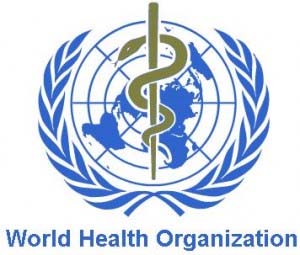Contamination, Pollution and Quality
Water quality status of rivers in India – Report of Central Water Commission
Posted on 15 Jul, 2011 06:19 PMThe Level-I Laboratories are located at 258 field water quality monitoring stations on various rivers of India where physical parameters such as temperature, colour, odour, specific conductivity, total dissolved solids, pH and dissolved oxygen of river water are observed.
A comparison of PureIt and Swach water purifier brands - Guest post by Mrinalini Goswami
Posted on 14 Jul, 2011 11:59 AMGuest post by: Mrinalini Goswami
Both the purifiers already have identified their space in the niche of household water treatment establishing themselves as competitive technologies. Brief highlights of both the purifiers are compiled in the table below:
PLC & SCADA based water quality, treatment & distribution management system for 428 MLD PCMC water supply system
Posted on 12 Jul, 2011 04:16 PMObjective: To monitor and control from a single point the water quantity, quality, treatment and distribution process in real time for the entire city.
This project caters to the need for a real time water auditing, monitoring and control system for the entire city of Pimpri Chinchwad spread over 171 sq.kms with a water supply of 428 ML per day.
Groundwater governance in India – A case study by World Bank
Posted on 09 Jul, 2011 11:43 AMIt examines the impediments to better governance of groundwater, and explores opportunities for using groundwater to help developing countries adapt to climate change. It attempts to understand the practical issues that arise in establishing robust national governance frameworks for groundwater and in implementing these frameworks at the aquifer level.
The case study focused on the national, state and local levels. At the national and state levels, it analyzed the policy, legal, and institutional arrangements to identify the demand and supply management and incentive structures that have been established for groundwater management. At the local level, it assessed the operations, successes, and constraints facing local institutions in the governance of a number of aquifers within peninsula India, on the coast and on the plain of the Ganges river valley.
Guidelines for drinking water quality - Fourth edition by World Health Organisation (2011)
Posted on 09 Jul, 2011 10:41 AM This integrates the third edition, which was published in 2004, with both the first addendum to the third edition, published in 2006, and the second addendum to the third edition, published in 2008. It supersedes previous editions of the Guidelines and previous International Standards.
This integrates the third edition, which was published in 2004, with both the first addendum to the third edition, published in 2006, and the second addendum to the third edition, published in 2008. It supersedes previous editions of the Guidelines and previous International Standards.
This edition of the Guidelines further develops concepts, approaches and information introduced in previous editions, including the comprehensive preventive risk management approach for ensuring drinking-water quality.
Launch of film 'Mercury in the Mist', NFSC, July 1, 2011, Chennai
Posted on 01 Jul, 2011 11:10 AM Organizers:
Organizers:
Low carbon strategies for inclusive growth - An interim report of the Planning Commission's expert group
Posted on 28 Jun, 2011 11:44 PM Some policy measures implied by various options have also been indicated. The main sectors examined in the report are power, transport, industry, buildings and forestry.
Some policy measures implied by various options have also been indicated. The main sectors examined in the report are power, transport, industry, buildings and forestry.
Increased concentrations of Green House Gases (GHGs) and the overall warming of the atmosphere has resulted in changing rainfall patterns, disruption in hydrological cycles, melting of ice caps and glaciers, rise in sea levels, and increase in frequency and intensity of extreme events such as heavy precipitation and cyclonic activities.
These have in turn had serious impact on sustainability of water resources, agriculture, forests and ecosystems, affecting the well being of billions of people on earth. Widespread melting of glaciers and snow cover will reduce melt water from major mountain ranges (e.g. Hindu Kush, Himalaya, Andes) where more than one billion people currently live.
Hi-tech vs low-tech in the water sector in the village of Dandiganahalli near Bangalore - Article by S. Vishwanath
Posted on 28 Jun, 2011 05:40 PMEver since Schumacher wrote his now very, very famous book small is there has in my mind been a question of the appropriateness of the solutions we urban educated types posit for rural ‘problems’.
Mining havoc: Impact of mining on water resources in Goa - Article from Dams, Rivers and People
Posted on 25 Jun, 2011 02:02 PM
Pumping of water from Cavrem Sheikh Salim mine, severely lowering groundwater table in the village
Image courtesy: Sebastian Rodriguez, Mand Goa
Gravity based spring water supply systems in Vishakhapatnam: A sustainable solution to an age-old problem
Posted on 23 Jun, 2011 05:42 PM With an annual rainfall of more than 1200 mm, this region has truly pristine and under-developed ground water resources. The water related issues are more complex in the hilly areas. Some of the most concerning issues that affect the current water scenario in the Eastern Ghats are pollution of water sources (springs & streams) leading to poor health, illiteracy and ignorance resulting in improper hygiene and sanitation practices. The burden on women and children is also high since they have to walk a long distance to the springs/streams for fetching water.





